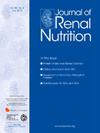钾钠替代品会影响食物中的钠和钾含量。
IF 3.2
3区 医学
Q2 NUTRITION & DIETETICS
引用次数: 0
摘要
目的:钾基钠替代品(PBSS)可用于在食品加工过程中替代钠。钾和钠含量与 PBSS 的关系尚不清楚。本研究的目的是按钠含量声称类别描述 PBSS 的普遍性,并按钠含量水平描述 PBSS 与钠和钾浓度的关联:这项横断面分析使用了美国农业部 2018 年 7 月版的品牌食品数据库。产品被划分为钠含量声明类别,并分析是否存在 PBSS。钠和钾均未缺失的产品按钠含量分组,并分析PBSS的发生率,以探究钾和钠的浓度。采用列比例 z 检验和 Bonferroni 校正,按钠含量声称类别探讨 PBSS 的发生率。采用 Mann-Whitney U 检验来评估不同钠含量等级之间以及不同钠含量等级之间钾和钠浓度的差异,并根据是否存在 PBSS 进行检验:结果:在统计学上,"无钠含量声称"(2.4%)、"淡盐"(0.5%)和 "无盐"(0.6%)声称类别中的 PBSS 发生率明显低于 "无钠"(9.5%)、"低钠"(10.3%)和 "减钠 "声称类别中的 PBSS 发生率(23.3%;均为 p):与其他钠含量声称类别相比,"低钠 "声称类别的 PBSS 发生率更高。PBSS的存在与食品中钾和钠的浓度较高有关。本文章由计算机程序翻译,如有差异,请以英文原文为准。
Potassium-Based Sodium Substitutes Impact the Sodium and Potassium Content of Foods
Objective
Potassium-based sodium substitutes (PBSS) can be used to replace sodium during food processing. How potassium and sodium content is associated with PBSS is not known. The objectives of the study were to describe the prevalence of PBSS by sodium content claim category and describe how PBSS are associated with sodium and potassium concentrations by sodium level.
Design and Methods
This cross-sectional analysis used the July 2018 version of the United States Department of Agriculture’s Branded Food Products Database. Products were divided into sodium content claim category and were analyzed for the presence of PBSS. Products with nonmissing values for sodium and potassium were grouped by sodium level and analyzed for the prevalence of PBSS to explore potassium and sodium concentration. Column proportion z-test with the Bonferroni correction was used to explore the occurrence of PBSS by sodium content claim category. Mann-Whitney U-test was used to assess differences in potassium and sodium concentrations across sodium levels and within levels by the presence/absence of PBSS.
Results
The prevalence of PBSS in the categories “without a sodium content claim” (2.4%), “lightly salted” (0.5%), and “unsalted” claims (0.6%) were statistically significantly lower than prevalence of PBSS in the “sodium free” (9.5%), “low sodium” (10.3%), and “reduced sodium” claim categories (23.3%; all P < .01). Among the group of products with serving sizes more than 30 g containing PBSS, there was a 357 mg per serving higher median sodium concentration and a 160 mg per serving higher median potassium concentration compared to the group without PBSS (both P < .01).
Conclusion
In the “reduced sodium” claim category, a higher prevalence of PBSS was found compared to other sodium claim categories. The presence of PBSS was associated with higher potassium and sodium concentrations in foods.
求助全文
通过发布文献求助,成功后即可免费获取论文全文。
去求助
来源期刊

Journal of Renal Nutrition
医学-泌尿学与肾脏学
CiteScore
5.70
自引率
12.50%
发文量
146
审稿时长
6.7 weeks
期刊介绍:
The Journal of Renal Nutrition is devoted exclusively to renal nutrition science and renal dietetics. Its content is appropriate for nutritionists, physicians and researchers working in nephrology. Each issue contains a state-of-the-art review, original research, articles on the clinical management and education of patients, a current literature review, and nutritional analysis of food products that have clinical relevance.
 求助内容:
求助内容: 应助结果提醒方式:
应助结果提醒方式:


